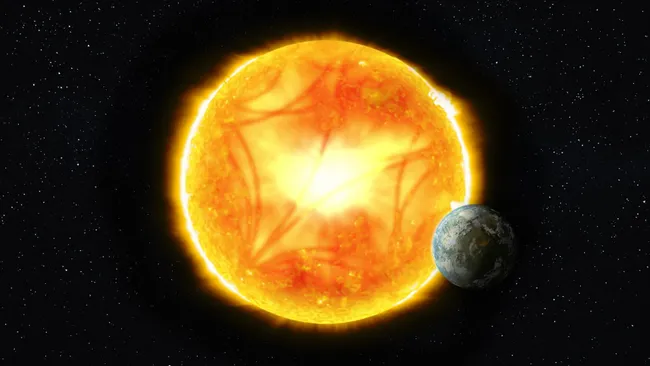How is the Enhancing Gaia’s Comprehensive Galactic Map through Stellar Melodies.
“We tuned in to the ‘melodies’ of an extensive array of stars, including those situated 15,000 light-years from us!”
Astronomers have innovated a novel method for gauging cosmic distances: by interpreting the “musical” frequencies emitted by vibrating stars, akin to a colossal orchestra playing cosmic instruments in harmony.
These findings hold the potential to refine the European Space Agency (ESA) satellite Gaia’s capability in charting positions and distances of approximately two billion stars while meticulously constructing a three-dimensional map of the Milky Way.
Traditionally, scientists rely on parallax—a shift in an object’s apparent position viewed from different locations—to measure star distances. This method involves gauging angles of the star itself and triangulating using Gaia’s spatial positioning. However, the challenge arises with distant stars, where the parallax displacement becomes minute. This diminutive shift can introduce subtle systematic errors, potentially biasing the measurements.
To address this issue, a collaborative team, including researchers from the Federal Institute of Technology Lausanne (EPFL) and the University of Bologna, endeavored to rectify these errors. Their focus centered on obtaining the most precise observations to date of over 12,000 oscillating red giant stars.
“We conducted a meticulous comparison of the parallaxes reported by Gaia with those we derived using asteroseismology,” remarked Saniya Khan, spearheading the latest research at the EPFL Standard Candles and Distances group.
What’s shaking Gaia?
The team’s examination of stellar vibrations, known as “asteroseismology,” resembles how geologists study Earth’s composition through seismic patterns.
Khan and her colleagues utilized the oscillations and vibrations within their sample stars, represented as subtle fluctuations in light intensity, translating them into audible sound waves. These sound frequencies from the stars were then converted into distance measurements.
“The frequency spectrum enables us to ascertain a star’s distance, providing us with asteroseismic parallaxes,” Khan explained. “In our investigation, we ‘listened’ to the ‘music’ produced by numerous stars—some positioned as far as 15,000 light-years away!”
The spectrum of sounds also unveiled insights into the characteristics of the stars in their sample, aiding in identifying these celestial instruments within the cosmic orchestra.
“By scrutinizing the frequency spectrum of stellar oscillations, we can estimate a star’s size, akin to identifying a musical instrument by its sound—think of the distinct pitch between a violin and a cello,” elaborated Andrea Miglio, a study author from the University of Bologna’s Department of Physics and Astronomy.
After calculating a star’s size using this method, its luminosity became determinable, which was then compared to its apparent brightness from Earth. Combining this data with observations of the stars’ temperatures and elemental composition allowed for the final distance calculation.
This calculated distance served as the basis for determining parallax, subsequently cross-checked against Gaia’s parallax measurements acquired during its data collection—a comprehensive validation of the ESA mission’s measurement precision.
“Gaia has exponentially increased the number of stars with measured parallaxes by 10,000 times compared to its predecessor, the ESA Hipparcos mission,” noted Richard Anderson, leading the EPFL Standard Candles and Distances research group. “Asteroseismology remains the sole method to verify Gaia’s parallax accuracy across the entire sky—for both faint and bright stars.”
Similar to the stars it investigates, the future appears promising for this asteroseismology-based distance-measuring technique.
“Upcoming space missions like TESS and PLATO, aimed at discovering and surveying exoplanets, will leverage asteroseismology, providing expansive datasets across broader sky regions,” Khan concluded. “Approaches akin to ours will play a pivotal role in refining Gaia’s parallax measurements, significantly contributing to our cosmic orientation and benefiting numerous fields within astronomy and astrophysics.”
The team’s research was published in September in the journal Astronomy & Astrophysics.
Do not forget to share your opinion with us to provide you with the best posts !




0 Comments